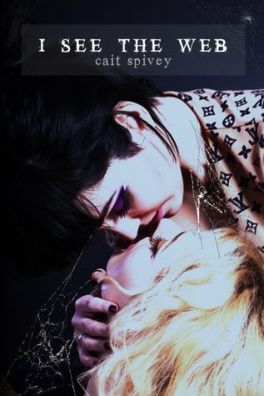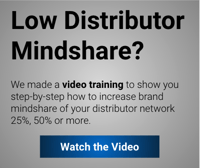Writing is one of those professions that people tend to glamorize. One expects writers to be guzzling scotch by the bottle, working exclusively at night, and taking long, lonely walks down deserted, cold New England beaches in a wool sweater. Or perhaps sipping on a rum drink in some Havana hotel bar in front of a mechanical typewriter, some balled up pieces of paper, and an overflowing ashtray.
Like most professions, the reality is rarely like that. One reality that writers must face, especially in the age of television and the internet, is the reality of marketing. Even writers who are lucky enough to have landed representation by a big publisher, with their attendant teams of marketers, have to actively and strategically be engaged in marketing not just their books, but themselves.
My friend Cait Spivey is a writer, and she’s doing marketing right. There’s no magic wand, no magic formula, either. She hasn’t discovered some marketing “sorcerer’s stone” that will free her from ever thinking about marketing again. She hasn’t discovered it because it doesn’t exist. She’s doing marketing the way all successful marketers do it: consciously, consistently, and enthusiastically.
Let this be a lesson to marketers everywhere: if you look at marketing as a burden, or unnecessary evil, you are significantly reducing your chance of success. Believe in your product, be excited about reaching the people you want using your product, and be genuine. Then be willing to put in the work.
I admire Cait’s determination and persistence, and her approach to marketing: it’s not so much about building herself up, but by building connections. She builds herself up by building other people up. On Twitter, on Facebook, on her blog, through her editing company, in her personal life, she’s always trying to help other writers. She says interesting things online about writing, and about marketing your writing. She’s not giving away secrets, she’s establishing credibility and building goodwill.
To promote her latest short story, I See the Web, she’s launched a “blog tour.” What is a blog tour, you ask? She’s enlisted friends, colleagues, and fellow writers to write a blog that relates to I See the Web. What I like about this approach is the natural and honest networking. No doubt some of you reading this blog right now have come from Cait’s network. You never would have found me, or my blog, without this. So Cait is helping me reach people, and I, in turn, am happy to help her reach a new audience.

I See the Web by Cait Spivey
I read I See the Web a few months ago, and I thoroughly enjoyed it. Cait is a very talented writer, who spins a good yarn (see what I did there?), and writes compelling, interesting characters. While I think her writing is good enough for everyone to enjoy, it’s targeted pretty solidly at the young adult (YA) market, so if you have any teens or pre-teens in your life, get it up on their Kindle; they’ll thank you for it.
I had the opportunity to interview Cait about her thoughts on marketing and the future of books:
EB: How do you feel about the work of marketing your own writing? Is it an unpleasant distraction from what you love to do, or a welcome break? Something in between?
CS: It falls in-between (funnily enough, I read an article from Richard Dawkins this morning about intermediates versus absolutes). I enjoy some aspects of it, like creating teaser images, and organizing this blog tour has been exciting too. It is definitely a distraction, but not an unpleasant one.
The worst and most distracting aspect is that it becomes kind of an obsession. A lot of people in the publishing industry lately have been encouraging authors to be more creative in their marketing, moving away from the standard book signing toward more engaging and interactive events. As an example, a steampunk author in New York held a steampunk afternoon tea at which she signed and sold books. So for me, I’ll be writing something totally different and then get distracted by an idea for an I See the Web event (signing at the Insect Zoo!).
EB: Are there any marketing blogs or books that have been particularly influential in shaping your marketing efforts?
CS: I’ve been following the example of Summer Wier, the director of marketing at REUTS Publications, one of the small presses for which I edit, and of the numerous authors I’ve had the pleasure to assist in their own blog tours. Writer Unboxed is a kind of catch-all writing and publishing blog that sometimes goes over marketing (their top post today is on social media). I’m one of those authors who scrambled to put together a marketing plan rather late in the game (would-be authors: plan ahead!), so I hadn’t done much research. This is something I plan to remedy, so I’m happy to take recommendations!
EB: As an author, you have two different things to market: the brand of you, and each individual book. How do you approach this?
CS: The brand of “me” is something I’ve been working on for about two years, since I became serious about getting published. Author Chuck Wendig’s advice on the subject is to be the best version of yourself, so that’s my approach. On Twitter and on my website, I try be my most honest, fair, and interesting. Often authors are advised to stay away from controversial subjects (politics, religion, etc) so as not to alienate readers, but I can’t do that if I’m to remain true to myself. I’m sure there are people who won’t read my books because of my feminism or atheism or queerness, but there are just as many (if not more) who relate to me through those labels, and who may therefore enjoy my books, which often touch on those topics. I See the Web, for example, features a lesbian romance.
Marketing per book is simultaneously easier and more difficult. On the one hand, it’s more specific and more timely. On the other hand, sometimes the content works against you. No one has (vocally) had an issue with the lesbian main character, but dozens have said they can’t read I See the Web because of the spiders! So some of my marketing has been a campaign for the acceptance of spiders, haha.
In general, though, book marketing seems to hinge on the story’s hook: things are looking up for a lovestruck young lesbian, until the spiders start whispering. My teaser photos have focused on those two aspects: the budding romance, and the creepy spiders. But it’s also about me and my accessibility as an author, which is why I wrote some posts for this tour on inspiration, process, and experience.
EB: I’ve heard you mention before that Twitter is really important in your industry (publishing). I don’t really get the appeal of Twitter, or understand its success. Could you, in 140 characters, explain Twitter to me?
CS: For writers, Twitter is a support group where encouragement and advice are quickly given, and your book news is readily retweeted.
EB: We’ve all heard of Amanda Hocking who, in her mid-20s, sold millions of dollars worth of fantasy e-books, and continues to do quite well for herself. Do you have any thoughts on her success? Right time, right place? Best author ever? Best marketer ever? Luck?
CS: I’ve never read any of her books, so I can’t speak to the quality. The simplest answer is that her books fulfilled a desire shared by millions of readers, and she did a good job of getting the word out to those readers. Successful books always have a healthy mix of all of those things: good quality, good marketing, good timing, and luck. These things are all (except for quality) alchemical, difficult to pin down, and writers can drive themselves nuts searching for absolutes. The best thing to do is read in your genre, especially new releases, keep track of upcoming releases and plan accordingly, while thinking outside the box for ways to engage potential readers. This is of course easier said than done!
EB: Are you pursing any print opportunities? I loved I See the Web, but you can’t exactly sign my copy…. Do you think traditional print publication has a future, or will e-books eventually supplant print books?
CS: I See the Web, its sequel A Single Thread (10/31/14), and the third, untitled novella in the trio, will be released in a print omnibus, likely in late 2015 or early 2016. Individually, they’ll all remain ebooks, which is best for novellas of their size, I think.
But for larger works, I don’t think print will ever go away, not for readers or writers. Ebooks are expedient, but paperbacks and hardcovers are tangible and nostalgic, and much, much easier to come up with events for! I haven’t planned any live, in-person events for I See the Web yet because I haven’t worked out exactly how to host a book event without physical books to give away–though I do have an idea for a card with a QR code directing readers to the buy page for the ebook. Do people still use QR codes?
EB: I just finished Donna Tartt’s The Goldfinch, which I loved, and now I am indulging my inner fantasy nerd and reading the final book in the Wheel of Time series. What should I read next? Any choice recommendations?
CS: I read Brian McClellan’s Promise of Blood a few weeks ago and found it dense but innovative, so that might be up your alley.

Cait Spivey
I would like to extend my thanks to Cait for taking the time to answer my questions, and for inviting me to participate in her blog tour.
Originally posted September 25th, 2014.


